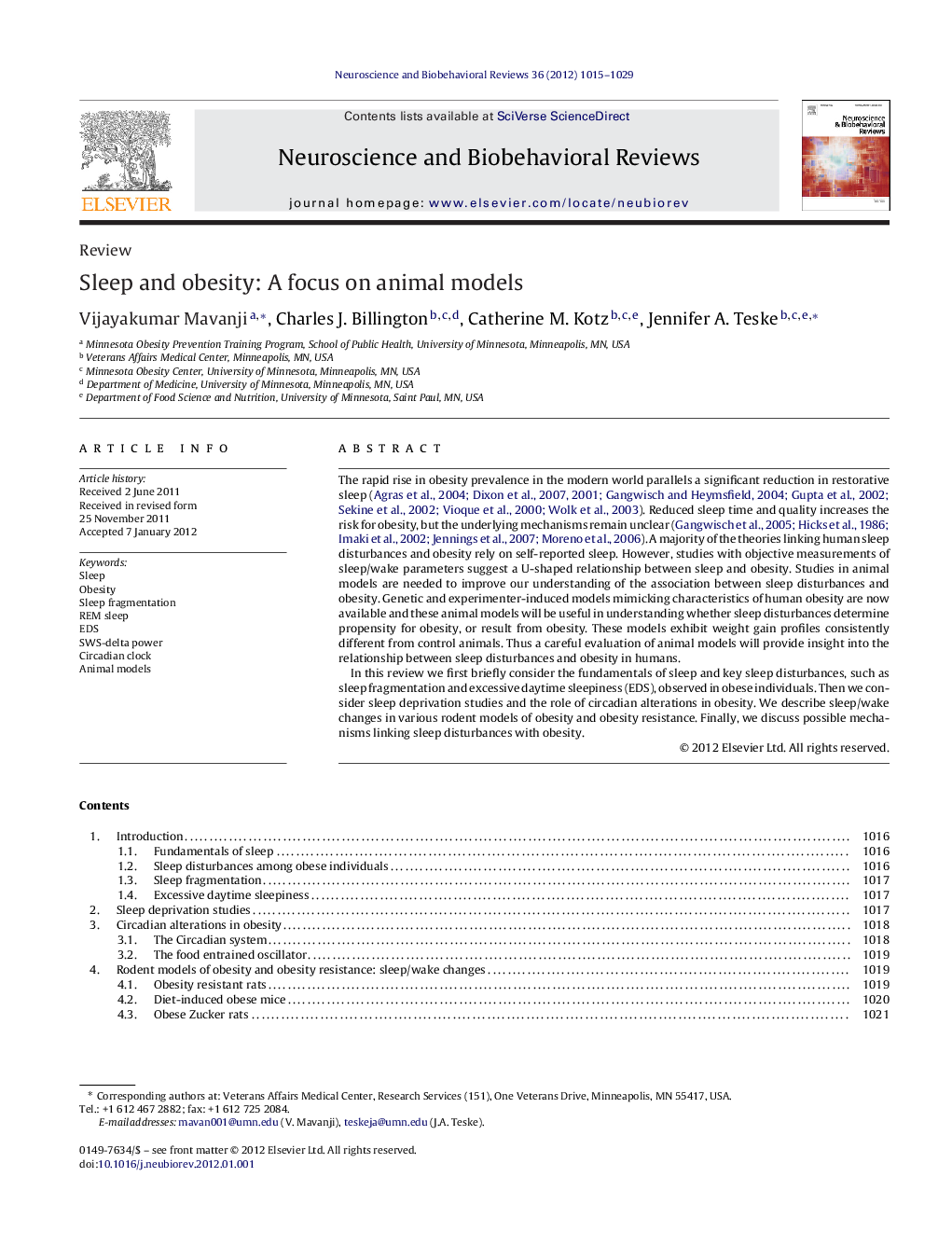| کد مقاله | کد نشریه | سال انتشار | مقاله انگلیسی | نسخه تمام متن |
|---|---|---|---|---|
| 937565 | 924517 | 2012 | 15 صفحه PDF | دانلود رایگان |

The rapid rise in obesity prevalence in the modern world parallels a significant reduction in restorative sleep (Agras et al., 2004, Dixon et al., 2007, Dixon et al., 2001, Gangwisch and Heymsfield, 2004, Gupta et al., 2002, Sekine et al., 2002, Vioque et al., 2000 and Wolk et al., 2003). Reduced sleep time and quality increases the risk for obesity, but the underlying mechanisms remain unclear (Gangwisch et al., 2005, Hicks et al., 1986, Imaki et al., 2002, Jennings et al., 2007 and Moreno et al., 2006). A majority of the theories linking human sleep disturbances and obesity rely on self-reported sleep. However, studies with objective measurements of sleep/wake parameters suggest a U-shaped relationship between sleep and obesity. Studies in animal models are needed to improve our understanding of the association between sleep disturbances and obesity. Genetic and experimenter-induced models mimicking characteristics of human obesity are now available and these animal models will be useful in understanding whether sleep disturbances determine propensity for obesity, or result from obesity. These models exhibit weight gain profiles consistently different from control animals. Thus a careful evaluation of animal models will provide insight into the relationship between sleep disturbances and obesity in humans.In this review we first briefly consider the fundamentals of sleep and key sleep disturbances, such as sleep fragmentation and excessive daytime sleepiness (EDS), observed in obese individuals. Then we consider sleep deprivation studies and the role of circadian alterations in obesity. We describe sleep/wake changes in various rodent models of obesity and obesity resistance. Finally, we discuss possible mechanisms linking sleep disturbances with obesity.
► Obesity in humans is associated with disturbances in sleep and sleep homeostasis.
► We examined sleep–obesity associations in rodent models of obesity.
► These models exhibit most of the key sleep disturbances observed in obese humans.
► Thus, rodent obesity models also support an association between sleep and obesity.
► Improving sleep quality may be a clinical tool to treat obese individuals.
Journal: Neuroscience & Biobehavioral Reviews - Volume 36, Issue 3, March 2012, Pages 1015–1029